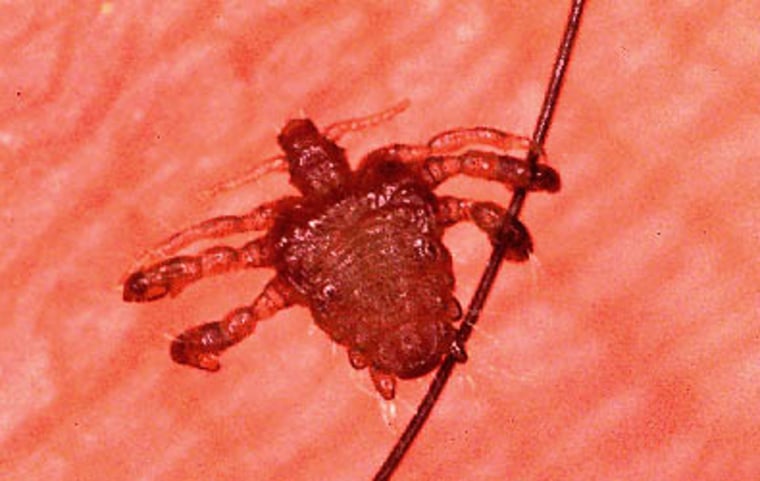A Dutch museum said Friday it is having trouble getting its hands on a parasite that just about everybody else is anxious to avoid: crabs.
The Rotterdam Natural History Museum has appealed for somebody — anybody — to give it a single crab louse for its collection, amid fears they may be dying out.
The donor's anonymity is guaranteed, said curator Kees Moeliker.
"We have over 300,000 species represented in our collection," he said. "Even though most of them are not on display, that doesn't mean small, unpopular insects are less important scientifically."
Moeliker said he began hunting in earnest for the species, also known as "pubic lice," last year after reading an article published by British doctors in the June issue of the journal of Sexually Transmitted Infections.
The article, titled "Did the Brazilian Kill the Pubic Louse?" found that crabs rates had fallen first in women, and several years later in men in Leeds even as rates of other sexual ailments were flat or rising. The authors hypothesized that the bikini wax treatment known as "The Brazilian," which removes all or most pubic hair, might be to blame.
"Although initially predominantly seen in females, extensive hair depilation, including pubic hair, has become popular in males in the past few years," wrote study author Nicola Armstrong. "This, along with reduced transmission rates from female partners, may account for the recent similar reduction in male patients."
Moeliker said that in essence, the lice's habitat is being threatened: "When the bamboo forests that the Giant Panda lives in were cut down, the bear became threatened with extinction. Pubic lice can't live without pubic hair."
Representatives of the Dutch Health Ministry, the Netherlands' Royal Health Institute, the Royal Dutch Medical Association, the industry Association of House Doctors, the Centers for Disease Control, and the Center for Sexually Transmitted Diseases all said they had no data on crab lice.
"We know they still exist, but it's very difficult to get an oversight on numbers," said Zant Kuijl of the Center for Sexually Transmitted Diseases.
He said that was because crab lice can be treated with medicines similar to those used on head lice, and people who get crabs are often too embarrassed to tell their doctors.
A spokeswoman for the U.S. Centers for Disease Control said the situation there was similar.
"Pubic lice is not one of our reportable STDs here in the U.S. — chlamydia, syphilis and gonorrhea are reported to us," Nikki Kay wrote in an e-mailed response. "Therefore, unfortunately, we don't have any recent trend analysis data on pubic lice that would be helpful."
Moeliker said he did not want to wait for proof the species is in decline.
"We learned this lesson with the house sparrow. Twenty years ago we thought, 'why bother to get one?' since they're so common," he said. "Next thing you know, the sparrow was on the threatened species list and they're almost impossible to find in the Netherlands."
